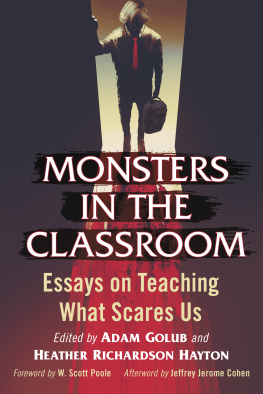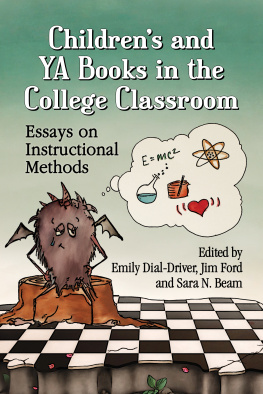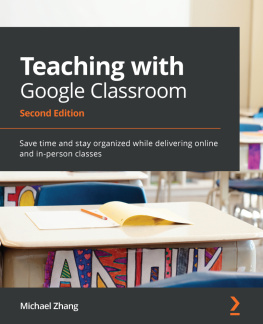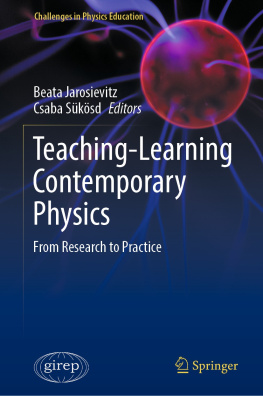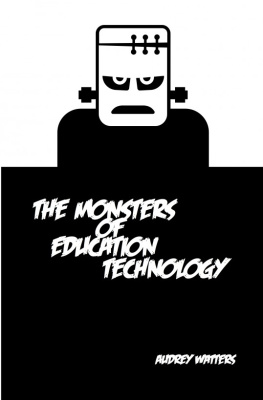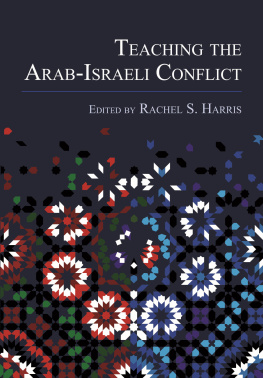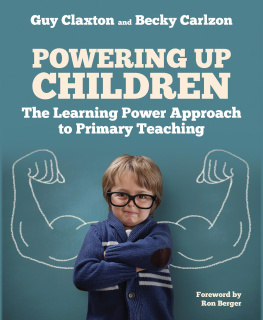
Monsters in the Classroom
Essays on Teaching What Scares Us
Edited by ADAM GOLUB and HEATHER RICHARDSON HAYTON
Foreword by W. Scott Poole
Afterword by Jeffrey Jerome Cohen

McFarland & Company, Inc., Publishers
Jefferson, North Carolina
LIBRARY OF CONGRESS CATALOGUING DATA ARE AVAILABLE
BRITISH LIBRARY CATALOGUING DATA ARE AVAILABLE
e-ISBN: 978-1-4766-2760-1
2017 Adam Golub and Heather Richardson Hayton. All rights reserved
No part of this book may be reproduced or transmitted in any form or by any means, electronic or mechanical, including photocopying or recording, or by any information storage and retrieval system, without permission in writing from the publisher.
Front cover illustration 2017 iStock
McFarland & Company, Inc., Publishers
Box 611, Jefferson, North Carolina 28640
www.mcfarlandpub.com
Acknowledgments
We would both like to thank our students for welcoming monsters into our classrooms and for inspiring us to explore monstrous pedagogies. We are grateful for the opportunity to work with such excellent scholars and teachers on this projectto continue learning from them and their monsters. We would also like to thank our graduate research assistants, Jasmin Gomez and Anna Rider, for their editorial assistance, as well as the two anonymous readers of this manuscript for their time and suggestions.
Adam Golub would like to thank his colleagues in the American Studies department at California State University, Fullerton, for supporting his mid-career turn to monster theory and pedagogy. He is also grateful to family, friends, and the many random strangers who have talked to him about their favorite monsters over the years.
Heather Richardson Hayton would like to thank her colleagues at Guilford College who enthusiastically welcome her monstrous experiments, even when they spill out into the halls of Archdale and onto the lawns of campus. She has benefited enormously from conversations about monsters over meals, drinks, and long plane rides with friends and family.
Foreword
W. SCOTT POOLE
Im looking forward to the class. I just dont understand how we can do a whole U.S. history course about monsters.
In varying forms, students have said these words to me before the beginning of almost all my American Monsters courses. Im a historian who studies and teaches American cultural history, but it is very likely that anthropologists, sociologists, communications scholars, and English professors have heard various versions of this idea from undergraduates eager to take a monsters class, but uncertain what they are signing on for.
It is not that they arent excited to take a course on monsters. In fact, sometimes it is fair to say their enthusiasm for the topic itself supersedes their spirit of scholarly inquiry. Many of them are undoubtedly hoping to get to watch a lot of horror movies. Some of them may enter our classes assuming that nothing could be easier than thinking and talking about zombies, vampires, and Frankensteins monsters. More than a few Game of Thrones fans fill the seats hoping that a dragon will glide by. No such luck in American history; another way that some of my colleagues studying medieval and East-Asian monsters have it over us. We do, however, have an embarrassment of riches when it comes to sea serpents swimming around in the 19th century, making these creatures of legend to the 1820s through the 1850s what the zombie has become to the early 21st century.
So, our students come sometimes giddy with excitement but uncertain of what we will actually do. Unfortunately, sometimes colleagues are equally dubious. I hear thats a popular class, they sniff, which translated means Im doing serious historical work in my class and so thats why its less popular. Perhaps this unfortunate attitude only plagues professors who examine American culture and modernity more generally? Medievalists, early modernists, and classicists are often less surprised by the topic as they have worked on monster narratives for decades, through the explication of everything from saga and epic (Gilgamesh can lay claim to both the earliest known human story and the first monster narrative), to the legal records of European witch trials and early-modern folktales of monstrous births and demonic rites.
Now, over the last few years, condescension toward the idea of a monsters class has slowly begun to erode in my particular corner of academia. I certainly have colleagues in the wider historical profession who have realized how much monster narratives play a role in American history and are building courses around the idea. One of the editors of this volume teaches one such course at California State University, Fullerton.
Although historians are playing catch-up in this area, scholars of film studies and communications theory have long taught the reading of the horror film, and how cinematic texts frame the monstrous and depend on certain audience assumptions about what constitutes a monster (while of course sometimes subverting those notions). The work of Robin Wood, Andrew Tudor, and Carol Clover has been key here, as was an extraordinary and very classroom-friendly essay collection that appeared almost 20 years ago, edited by Barry Keith Grant and entitled The Dread of Difference: Gender and the Horror Film (1996). Though often depending too much on Freudian and Neo-Freudian readings of horror for my tastes, the collection surveyed an astonishing array of material and placed gender and sexuality at the center of our understanding of horror, as I think it needs to be if students are to fully grasp their relevance.
Why have other academic disciplines only made their way slowly to the darkest part of the forest? Skepticism about the pedagogy and the study of monsters comes, knowingly or unknowingly, from scholars influenced very much by the Frankfurt Schools grumpy evaluation of pop culture as mind-numbing, apolitical mass culture. Some may have some version of Marshall McLuhans conception of cool media bouncing about in their heads: pop culture as mellow disengagement. The most trendinista of our postmodern colleagues may see us lost in Baudrillards desert of the real in our study of monsters, certain we are mistaking media illusion without substance for meaningful narrative. Of course, my fellow monster scholars who study the ancient Near East would quickly explain that its in just such haunted wastes that monsters make their lair, from Pazuzu of Exorcist fame to the jinn who remain part of Islamic thought both in the Quran and in numerous hadith.
Noting the ancient pedigree of studying the monstrous highlights the obvious fact that they have long been essential to various kinds of histories. Pliny the Elder collected monster tales in the first century from across the rather restricted limits of his known world. Long before anyone spoke of a hermeneutic of suspicion, Pliny showed some healthy skepticism toward the stories of werewolves at Lycos. In the Middle Ages, monastic encyclopedist Isidore of Seville catalogued the existence of monstrous races who lived beyond the borders of Latin Christian Europe. Sadly, when European explorers, settlers and conquerors made their way to West Africa, Asia, and the Americas, they took such conceptions of monstrous races with them.
In the modern era, two strands of scholarship emerged to examine the monster and its many heads, bloody claws, or blood-curdling screams. Psychoanalysis viewed the monster as many-tentacled or furry or fanged ids that come out to play in our dreams and sometimes our walking nightmares. In many respects, Freuds interpretation of the
Next page
